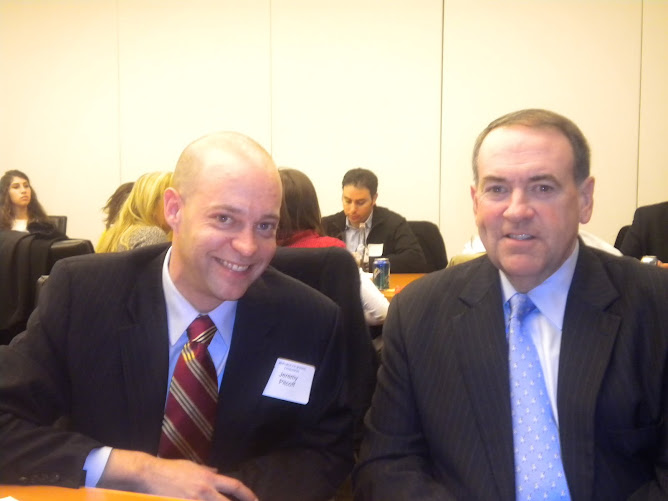In this hotly contested 2010 election season, the issues at hand can be readily broken down into two, apparently irreconcilable philosophies. These sparring theories are those of constitutional conservatism on the one hand, and social progressivism on the other. These precepts have been in conflict with one another, in varying degrees of intensity, throughout American history and perhaps at no time more virulently than at present. As a conservative Republican, as a journalist, and as a politically active resident of Smithtown, I feel an obligation to offer my neighbors an historical backdrop to the modern conservative movement.
There is little doubt that while drafting our Constitution, the intent of America’s Founding Fathers, was that of creating a national government capable of maintaining a cohesive union of the states, while simultaneously guaranteeing the general sovereignty of those states, and the individual liberties of the people. While James Madison and Alexander Hamilton, the architects of the U.S. Constitution, agreed that a strong central government was necessary in order to collect the taxes and support the military that a prosperous America would require, they did so with many reservations. Through a series of newspaper opinion pieces that were written during the 1780’s, we are able to ascertain a fair representation of Hamilton’s and Madison’s respective intents in crafting the Constitution.
Throughout the constitutional debate, Alexander Hamilton’s paramount concern was that of creating a centralized government capable of collecting taxes, which, in turn, could be utilized to fund an American military, capable of defending our nation and providing for the general welfare of the people. This should not be misconstrued, however, as an attempt by Hamilton to advocate for a government based economy. In fact, Hamilton was the first American known to advance the ideas of what is presently referred to as supply-side economics. In his “Continentalist” essays of 1782, Hamilton had the following to say of the self regulating nature of the American economy that he envisioned: “The motive of revenue will check its own extremes. Experience has shown that moderate duties are more productive than high ones.” These views were preludes to the economic policies of the Kennedy and Reagan administrations of the 20th century. Hamilton believed that the first clause of article 1, section 8 of the U.S. Constitution, gave sufficient protection to the American taxpayers by guaranteeing that “all duties, imposts and excises shall be uniform throughout the United States.” This “uniformity” clause was created to ensure that all citizens were equally affected by tax increases, therefore guaranteeing that special interest factions would be unable to consolidate undue power at the expense of the majority of Americans. This is why the modern, progressive income tax system was twice ruled unconstitutional by the U.S. Supreme court, before the 16th Amendment was ratified in the 1913 wave of progressivism that truncated Hamilton’s dream.
James Madison, though in accord with Hamilton in regard to the necessity of a centralized government, was even more emphatic than his colleague in regard to the dangers posed by an overreaching national government. In “Federalist” number 10, Madison voices his concern for the tendency of governments to consolidate their own powers, “and particularly for that prevailing and increasing distrust of public engagements, and alarm for private rights which are echoed from one end of the continent to the other. These must be chiefly, if not wholly, effects of the unsteadiness and injustice with which a factious spirit has tainted our public administrations.”This distrust of big-government is what led Madison to initiate a system of checks and balances within the federal government, and between the national and state governments as well. This would provide for four walls of defense against a usurpation of the people’s will.
“Ambition must be made to counteract ambition,” Madison writes in “Federalist” number 51, referring to the necessity of independent branches of government. Madison goes on to explain that it is within man’s nature to continually strive to wrest power from others, that the Constitution was drafted with the express purpose of insuring a continuity of rival ambitions so that no one faction could completely subdue the opinions and interests of another. Madison then bluntly declares, “If men were angels, no government would be necessary.”
After the Constitution was ratified, Madison became the chief proponent of the 10th Amendment. This final amendment to the Bill of Rights grants that “all powers not delegated to the United States by the Constitution, nor prohibited by it to the States, are reserved to the States respectively, or to the people.”
There is no question that the Obama Administration, and our present congressional majority, tends to favor progressivism. Over the past 20 months, these two branches of government have effectively functioned in unison. Their actions reveal their apparent view of the Constitution as an obstacle to be overcome. Conservatives seek to preserve the functions of American government in accordance with our Founder’s intents, while adapting to modern realities. Progressives seek to move beyond the Constitution, while acknowledging that some of its tenets hold validity. I do not seek to pontificate as to which view of government is the correct path to follow for all; I merely speak for myself and for others of my political ilk. A strong national defense, fair and equally apportioned taxes, and the maximum individual liberties that are consistent with law and order, are the tenets of my brand of conservatism. These were the visions of our Founding Fathers, of Abraham Lincoln, of John F. Kennedy and of Ronald Regan. They remain the dreams of many today.
A quest for the Coservative dream: Tax Cuts, Fiscal Conservation & Maximum Individual Freedoms Consistent with Law & Order
Subscribe to:
Post Comments (Atom)
Conservative Compatriots

Jeremy Pitcoff & Governor Mike Huckabee













No comments:
Post a Comment